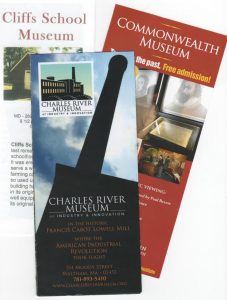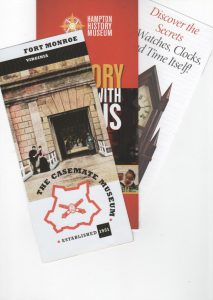Museums – Gold Mines for Writers
Shabby row houses lined this block of Maryland Avenue, and a small sign identified one of them as The Dime Museum. Parking was easy—a space almost in front of the museum. We walked up to the door and knocked. We waited. An older man creaked it open and stepped aside to let us enter.
‘”That’ll be five dollars each,” he said. We dug the money out of our pockets as we stared at the overlarge coffin on the floor. Inside stretched a nine-foot-tall Egyptian mummy. “All fake,” the man said. We assumed he was the owner, curator, and docent for this odd little museum.
 The Dime Museum in Baltimore closed awhile back. I hated to say good-bye to this unique bit of American history. The museum sought to replicate the small museums that flourished in the 19th and early 20th century. These were usually in someone’s home and included odd collections of curiosities for public viewing at a dime per person.
The Dime Museum in Baltimore closed awhile back. I hated to say good-bye to this unique bit of American history. The museum sought to replicate the small museums that flourished in the 19th and early 20th century. These were usually in someone’s home and included odd collections of curiosities for public viewing at a dime per person.
The museum’s atmosphere was musty, dusty, and rundown. The docent told us that there was a booming business in fake mummies during the heyday of these museums because all the dime museums wanted one. The other curiosities were equally bizarre, such as Abraham Lincoln’s last bowel movement (faked) and circus memorabilia. As my niece said after a visit, “It was interesting and somewhat disturbing.” You can read more about this museum and other interesting places on this website, https://roadsideamerica.com/story/11007.
I make a point of stopping at small museums as I travel. My interest probably stems from visiting the Castillo de San Marcos in St. Augustine, Florida, when I was a child. Our guide held us spellbound with gory stories of its past which appealed to my bloodthirsty mind and were probably totally fabricated. Nowadays, my museum visits stem from a need to research a bit of history for a novel I’m writing, but they often present mysteries and bits of information that send me scurrying in pursuit of a different story.
Gone are the dime museums and the dark converted storefronts or attics. I’ve found the quality of the museums I’ve visited to be excellent and the exhibits well designed, informative, and prepared by knowledgeable people. If there’s a question about an exhibit’s historical accuracy, it’s noted.
 I found the National Watch and Clock Museum in the small town of Columbia, PA, through a Google search. This museum is run by the National Watch and Clock Collectors Association, and the exhibits cover the history of time-keeping from the earliest non-mechanical devices to the latest. It includes 12,000 time-keeping devices of all kinds. The excellence of this museum is a surprise considering it’s set in such a small town.
I found the National Watch and Clock Museum in the small town of Columbia, PA, through a Google search. This museum is run by the National Watch and Clock Collectors Association, and the exhibits cover the history of time-keeping from the earliest non-mechanical devices to the latest. It includes 12,000 time-keeping devices of all kinds. The excellence of this museum is a surprise considering it’s set in such a small town.
I found the Visionary Art Museum in Baltimore, which features finely detailed sculptures and paintings by untrained or self-taught artists, through a city guide. Geppi’s Museum of Pop Culture, also in Baltimore, exhibits the comic books and other pop culture items we all grew up with. Sadly, this museum will close August 30, but much of its collection was donated to the Smithsonian Institute. In the Baltimore area are the Electronics Museum and the Cryptology Museum, run by the National Security Agency.
The Casement Museum in the walls of Fort Monroe at the mouth of the Chesapeake in Hampton, VA, offers interesting facts about the Civil War. This fort was held by the Union and became a station on the Underground Railroad. Hampton’s town museum also has excellent displays of the history of the town and the area.
Town museums, special interest museums, and other kinds of museums are reservoirs of obscure facts that can be woven into a story. I use them in researching my novels. How do I find out about them? Through a Google search of the topic for which I need more information or by buying a book that lists small or special interest museums. I did a quick search on Amazon and turned up these books: Anarchist’s Guide to Historic House Museums by Franklin D. Vagnone and Deborah E. Ryan; Roadster Guide to America’s Classic Car Museums & Attractions by Michael Milne; The Art Lover’s Guide to Japanese Museums by Sophie Richard; and Maritime Museums of North America by Robert H. Smith.
Eileen McIntire
Eileen has ridden a camel in the Moroccan Sahara, fished for piranhas on the Amazon, sailed in a felucca on the Nile, and lived for three years on a motorsailer, exploring the coast from Annapolis to Key West. Eileen has many years experience writing, editing and designing all manner of publications for nonprofits and professional associations. She is now co-owner of Summit Crossroads Press, which publishes books for parents, and its fiction imprint, Amanita Books. The inspiration for her 90s Club mystery series springs from meeting a slim, attractive woman at a pool party who was the only one actually in the pool swimming laps, and she was 91 years old. Since then, Eileen has collected articles about people in their 90s—and 100s—who are still active, alert and on the job. She often speaks at retirement villages on “Old Dogs, New Tricks.”